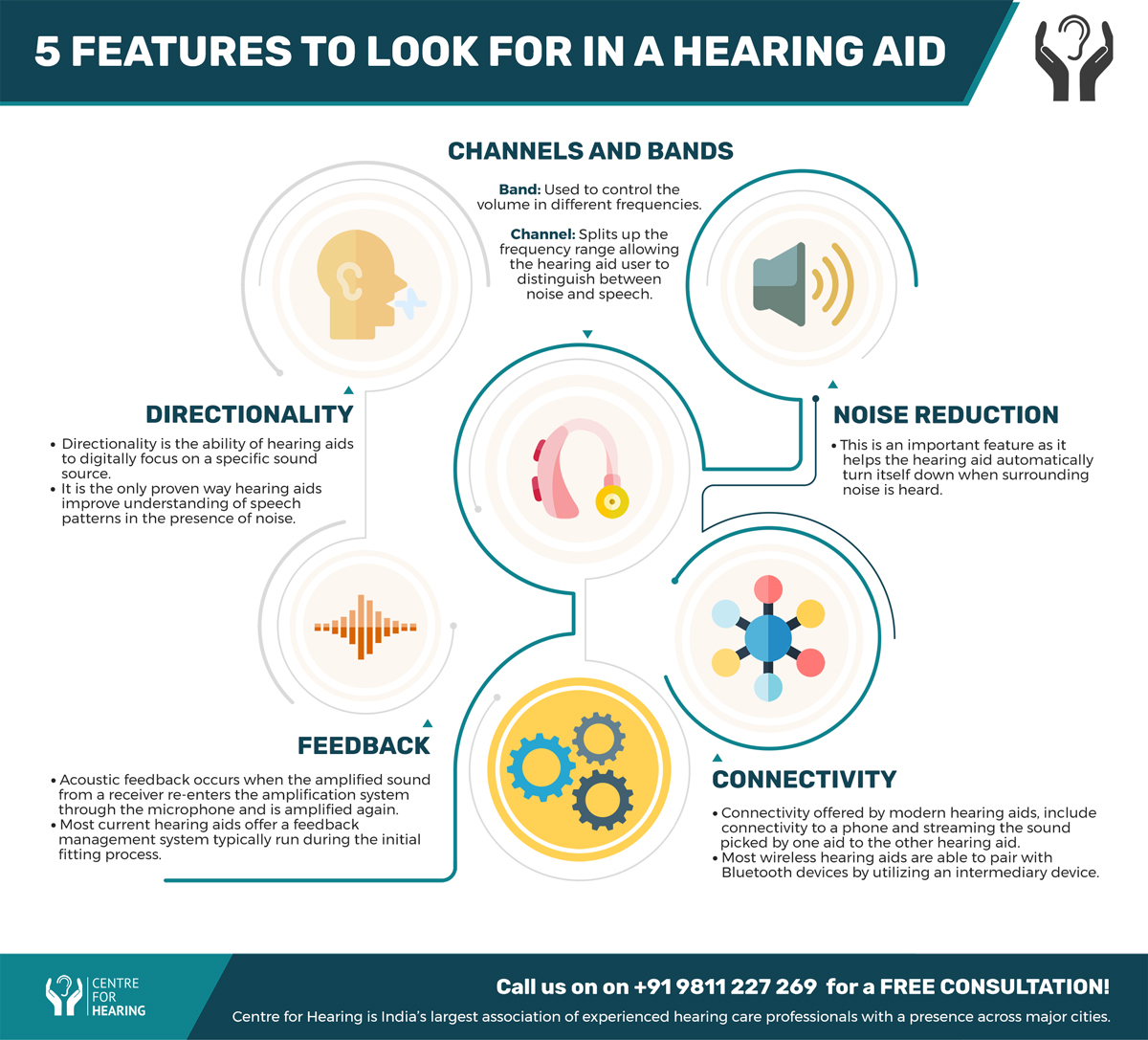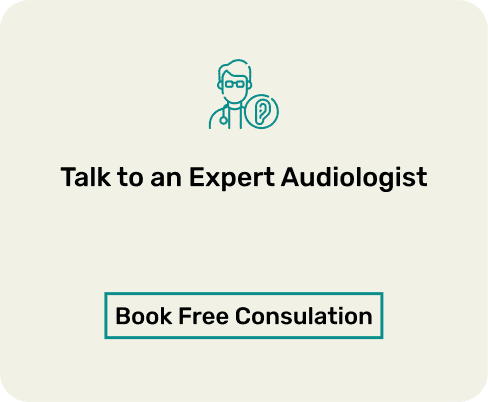Choosing a hearing aid can be quite a task – given the sheer number of brands and types available in the market! Not just that – the choice of hearing aid depends largely on an individual’s requirements and lifestyle. What might work for one, may be useless for another!
The ideal way to select a hearing aid is by consulting an Audiologist. Treatment of hearing loss depends entirely on the type, and degree – which can only be diagnosed by an expert! While in some cases, hearing loss can be treated with the help of surgery, in many cases it requires to be managed with hearing aids. Hearing aids won’t cure hearing loss – however, they can certainly help restore a person’s hearing. Let’s try and understand how exactly a hearing aid works.
How Does A Hearing Aid Work?
A hearing aid does not just amplify sound. It is a sophisticated device that can be tailored to meet the hearing needs and environments of different hearing impaired individuals.
- Traditional hearing aids (also called ‘analog hearing aids’) usually pick up the sound, translate it into an electrical signal, amplify it, and then feed it back into the ear. They are not that accurate in distinguishing the sources of sound – sound coming from the environment or from an individual.
- Digital hearing aids contain a silicon chip that continuously processes incoming sounds, converts them into clearer and more audible sounds and then releases these at the appropriate sound level into the ear. This ensures that the affected individual can understand them. This technology allows the hearing aid to distinguish between sounds that need to be amplified and unwanted noise, such as background or environment noises that needs to be reduced or done away with.
To know more about the components of a hearing aid, refer to this article on the types of hearing aids.
Along with the components that constitute a hearing aid, it is necessary to understand certain features that determine how well-suited a hearing aid would be to individual requirements and environments.
Here are 5 such features that you should enquire about, during your visit to the audiologist.
… In a rush? Just skip to the end of this post and Download the Visual Guide on these 5 Essential Features to Look For In a Hearing Aid!
5 Features To Look For In A Hearing Aid!

1. Channels And Bands
Two of the most important features of hearing aids are the channels and bands. Bands and channels determine how well a hearing aid can process and amplify a sound it perceives.
- Band: A band is used to control the volume at different frequencies. Using this feature, the hearing aid user can adjust the volume in a specific area of hearing loss, without affecting other areas where he/she might need a lower volume. The greater the number of bands a hearing aid offers, the more equipped it is to fit an affected individual’s hearing loss requirements.
- Channel: Channels split up the frequency range into individual groups, allowing the hearing aid user to distinguish between noise and speech. When a hearing aid offers multiple channels, the user can adjust each frequency that is too loud, without sacrificing on sounds the user wants to hear. Within each channel, you can control the intensity or amplitude of that channel, how the hearing aid boosts soft sounds more than loud, or limit the sounds at a certain peak or threshold.
It is important to note that increasing channels is useful until a particular point, after which the difference is negligible. Ideally, this limit is 20 channels.
2. Directionality
Directionality is the hearing aid’s ability to digitally focus in on a specific sound source around the user (usually a conversation partner), and it is the only proven way hearing aids improve understanding of speech patterns in the presence of noise. Directional systems have two or more microphones separated by a specific distance on a hearing aid. The difference in the time of arrival of sound to each of these microphones dictates how the hearing aid responds to the sound. There are three types of directional systems:
- Adaptive: These systems identify people talking all around you and focus wherever the speech is coming from.
- Fixed: These systems focus on a specific area (usually right in front of the user).
- Dynamic: These systems automatically change between listening all around you to a fixed direction.
3. Noise Reduction
For hearing aid users, background noise can affect communication abilities severely. In most modern hearing aids, the noise reduction feature is constantly at work, identifying what is happening in the surrounding sound environment. When it hears noise, the hearing aid automatically turns itself down.
The amount of gain (amplification) reduction usually depends upon how much noise there is. The more noise there is present, the greater the reduction in gain. While this gain reduction reduces the amplification of the competing noises, it can also decrease the energy in the speech signals. In other words, noise reduction can affect both speech and noise in exactly the same way.
This is where splitting the amplification into multiple channels or bands helps. Most noise reduction features will work separately within each unique frequency channel, therefore making it possible to reduce the amplification in the noisiest channels only. Frequencies more important for the understanding speech are not reduced as much as frequency bands less important for the understanding of speech.
4. Feedback
Acoustic feedback occurs when the amplified sound from a receiver re-enters the amplification system through the microphone and is amplified again.
While most feedback is reported to be a whistling sound, the sounds can vary from a hum to a loud screech. Most current hearing aids offer a feedback management system typically run during the initial fitting process.
5. Connectivity
One of the essential features of wireless hearing aids is that unlike traditional hearing aids, they can communicate with external devices, as well as with each other, using streaming technologies such as electromagnetic fields and Bluetooth.
- Electromagnetic fields can be picked up by the telecoil. It can pick up the signal from a phone that’s placed near one hearing aid and then stream the signal to the other hearing aid. Not only does this feature allow the wearer to hear the caller in through both hearing aids, it effectively excludes any ambient noise in the room.
- Most wireless hearing aids are able to pair with Bluetooth devices by utilizing an intermediary device. This device can then translate the Bluetooth signal into a signal that can be picked up by an FM receiver or telecoil. For instance, a wireless hearing aid may be connected to a streamer that is then connected via Bluetooth to the user’s cell phone. When someone calls, the streamer would indicate the incoming call and allow the user to activate the relay of the audio signal directly to his/her hearing aid.

It is important to ask the audiologist as many questions as possible to make sure that the hearing aid you choose suits your hearing needs. Hearing aids are available in a variety of styles and shapes, like BTE, CIC, IIC, RIC, etc. The affected individual can choose the hearing aid that suits his/her preferences in terms of comfort, visibility, degree, and type of hearing loss, etc. Each type has its own pros and cons. It is necessary to enquire about the maintenance procedures for each type, as well as the battery life.
For the most comprehensive diagnostic facilities and the latest technology in hearing aids, get in touch with Centre For Hearing today!
Call For A Free Consultation on +91 9811227269!



















